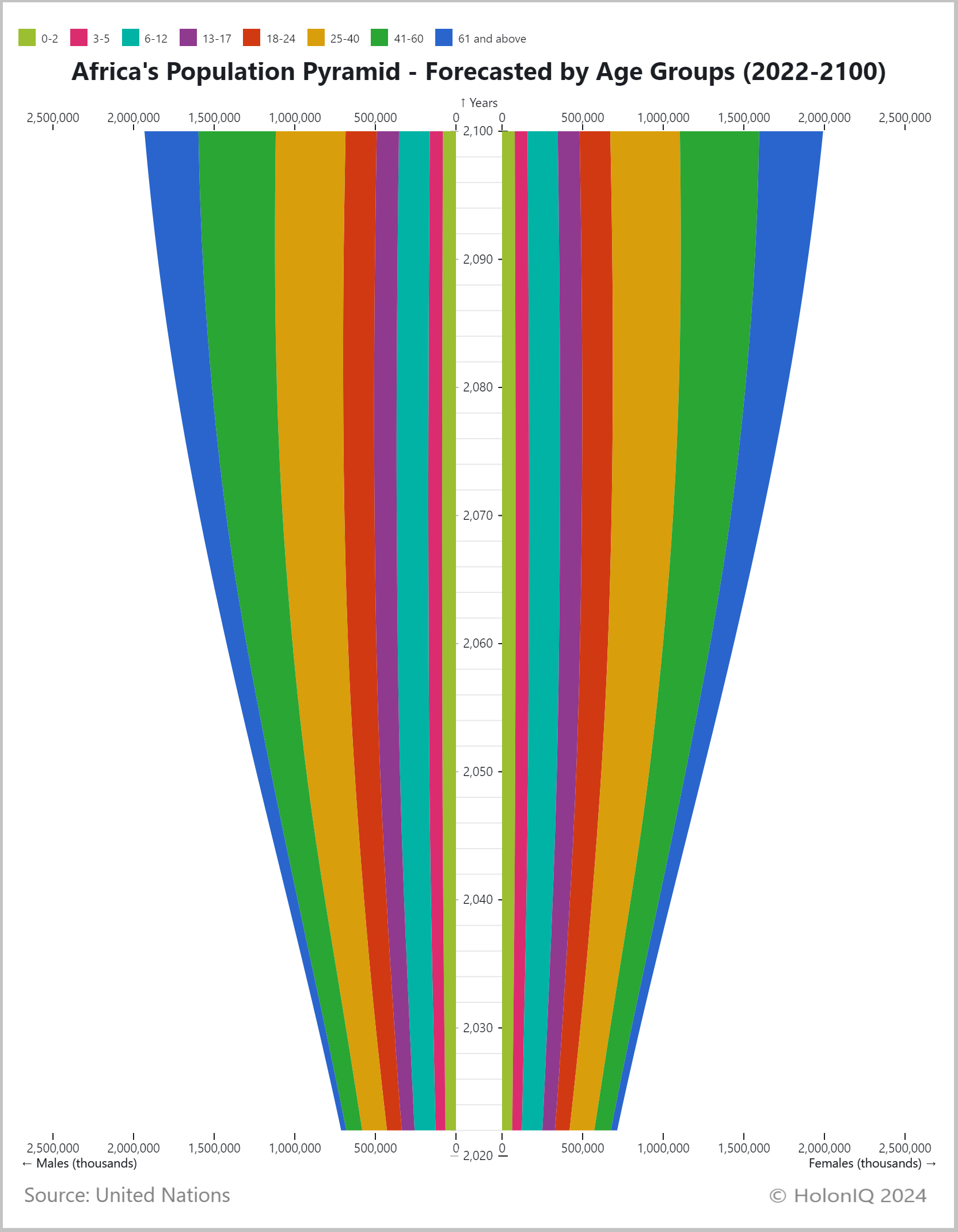🌍 3x African Population. 36% Wind Energy. LMS & Webcasting.
Chart of the Day #71 looks at Africa's Population Forecast, Australia's Renewable Energy Landscape, and the US Training Industry.
On Sunday, Poland made significant reductions in renewable energy generation for wind and solar farms due to excess electricity supply, underscoring the increasing difficulties its grid encounters as green energy usage expands. Nvidia and Georgia Tech’s College of Engineering are collaborating to develop a specialized AI supercomputer for students. Dubbed "AI Makerspace", this initiative grants undergraduate students access to high-performance hardware typically exclusive to researchers.
Today's Topics
🧑💻 Training Industry. LMS and webcasting most utilized in the US training industry
🎐 Wind Energy. Wind & solar lead as Australia's primary renewable energy sources
🌍 Population Forecast. Africa's population expected to triple by 2100
For unlimited access to over one million charts, request a demo.
🧑💻 LMS and Webcasting Most Utilized in the US Training Industry

In the US training industry, Learning Management Systems (LMS) and virtual classrooms/webcasting/video broadcasting stand out as the most widely adopted technologies, with reported usage rates of 98% and 92% respectively. The shift to virtual training programs, driven by the need for social distancing during the pandemic, led to significant growth in e-learning and virtual classroom usage. LMS usage also grew, particularly in colleges offering online degrees, where it serves as a vital platform for accessing resources and facilitating effective communication with the university. Despite recent advancements in technologies like artificial intelligence and augmented reality, their current usage remains relatively low, with less than 20% of respondents reporting adoption.
🎐 Wind & Solar Lead as Australia’s Primary Renewable Energy Sources

Wind energy emerged as Australia's leading renewable energy source, accounting for nearly 36% of total renewable energy production. However, small, medium, and large-scale solar cumulatively accounts for a larger share at 41%. The country's renewable energy industry commenced construction of over 5000 MW of wind and solar farms in 2022 – the highest for new renewable construction commitments on record.
Australia's abundant solar radiation, averaging 58 million petajoules (PJ) annually, offers significant potential for solar power generation. This figure is around 10,000 times more than the energy it consumes. Australia also takes advantage of its wind energy potential, particularly in the southern regions where the 'roaring 40s' westerly wind flow prevails. The highest concentration of wind resources, notably around Bass Strait, makes this area ideal for wind energy production.
🌍 Africa’s Population Expected To Triple by 2100

The UN has projected a significant increase in Africa's population, from approximately 1.4 billion in 2023 to nearly 4 billion by 2100 in the medium scenario, representing an almost threefold growth compared to the current population. This growth trajectory contrasts with projections for other global regions, where populations are expected to decline by the end of the century. The Lancet's research indicates that Nigeria, already the most populous country in Africa, will be a key driver of this growth, with an estimated population of 790.7 million by 2100. As a result, Nigeria is poised to become the second-largest country globally by 2100, surpassed only by India.
Niger and Chad, among the continent's least economically developed nations, are projected to experience the most significant growth in population size. This growth is primarily attributed to their persistently high fertility rates, currently averaging nearly 7 births per woman. While some African countries are expected to have lower fertility rates by 2100, the impending population growth is likely to be driven by the continent's prevailing high fertility rates across the region, with only seven African countries having fertility rates lower than the global average of 2.37 births per woman.
Like getting this newsletter? For unlimited access to over one million charts, request a demo.
Thank you for reading. Have a great week ahead!
Have some feedback or want to sponsor this newsletter? Let us know at hello@holoniq.com
